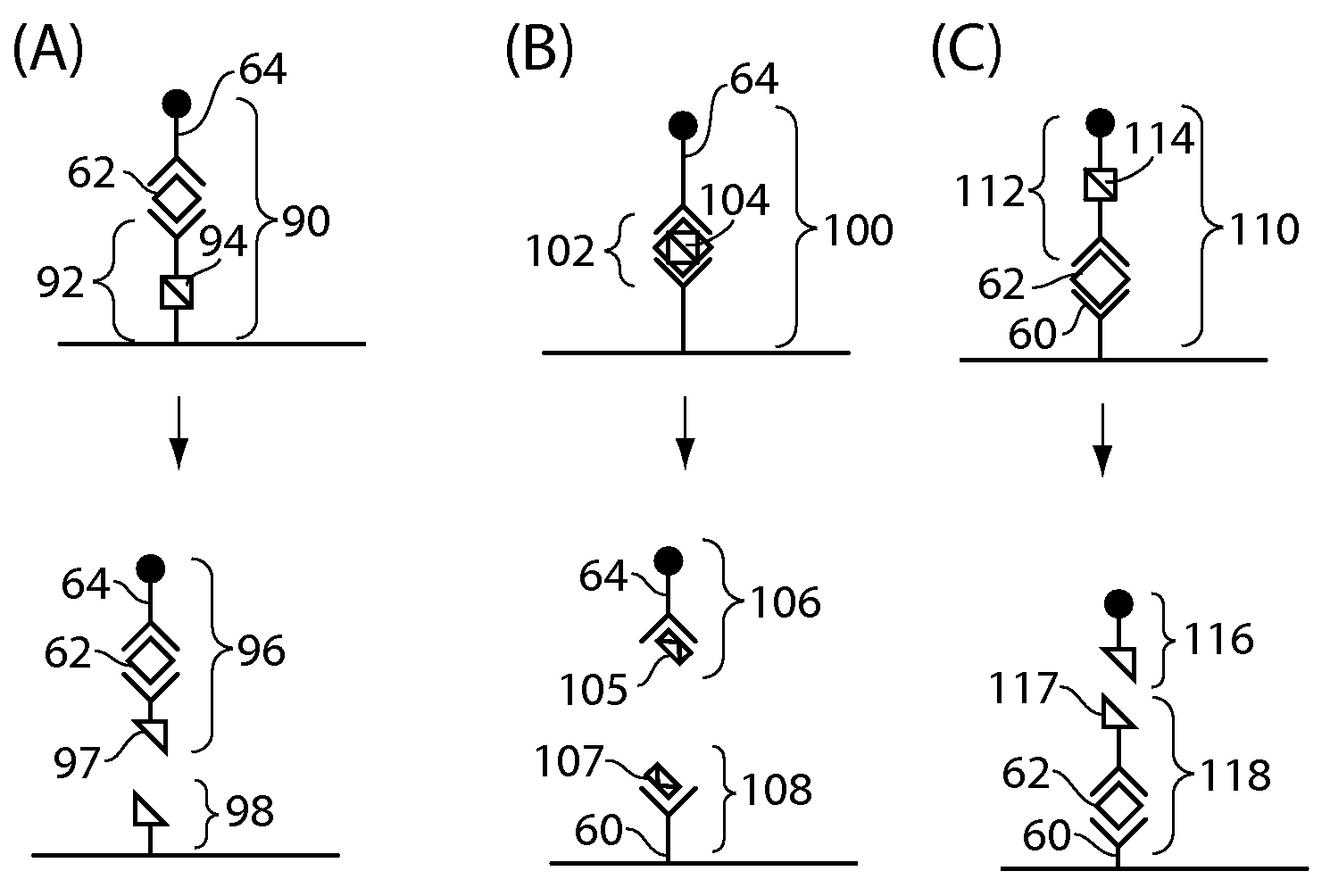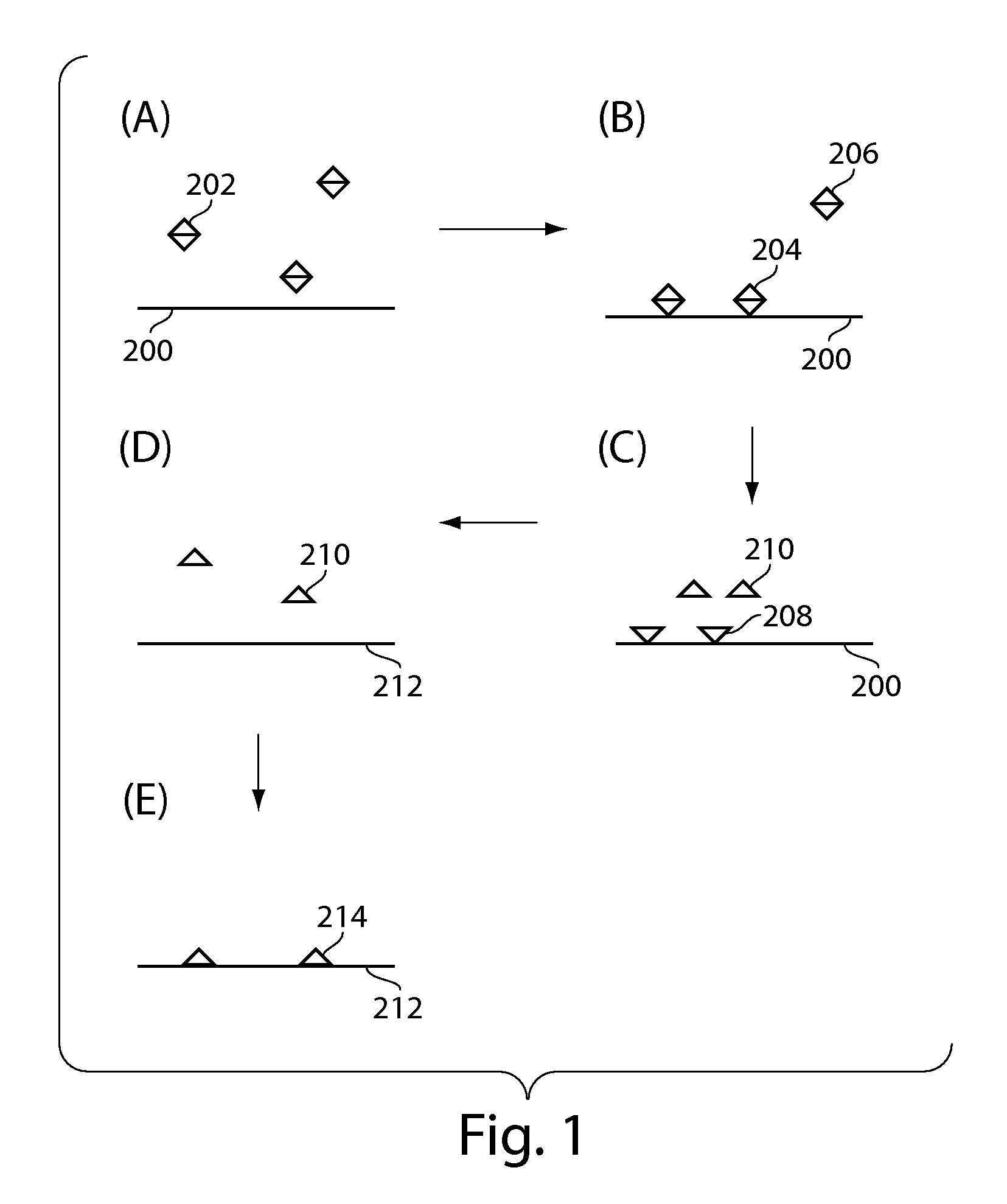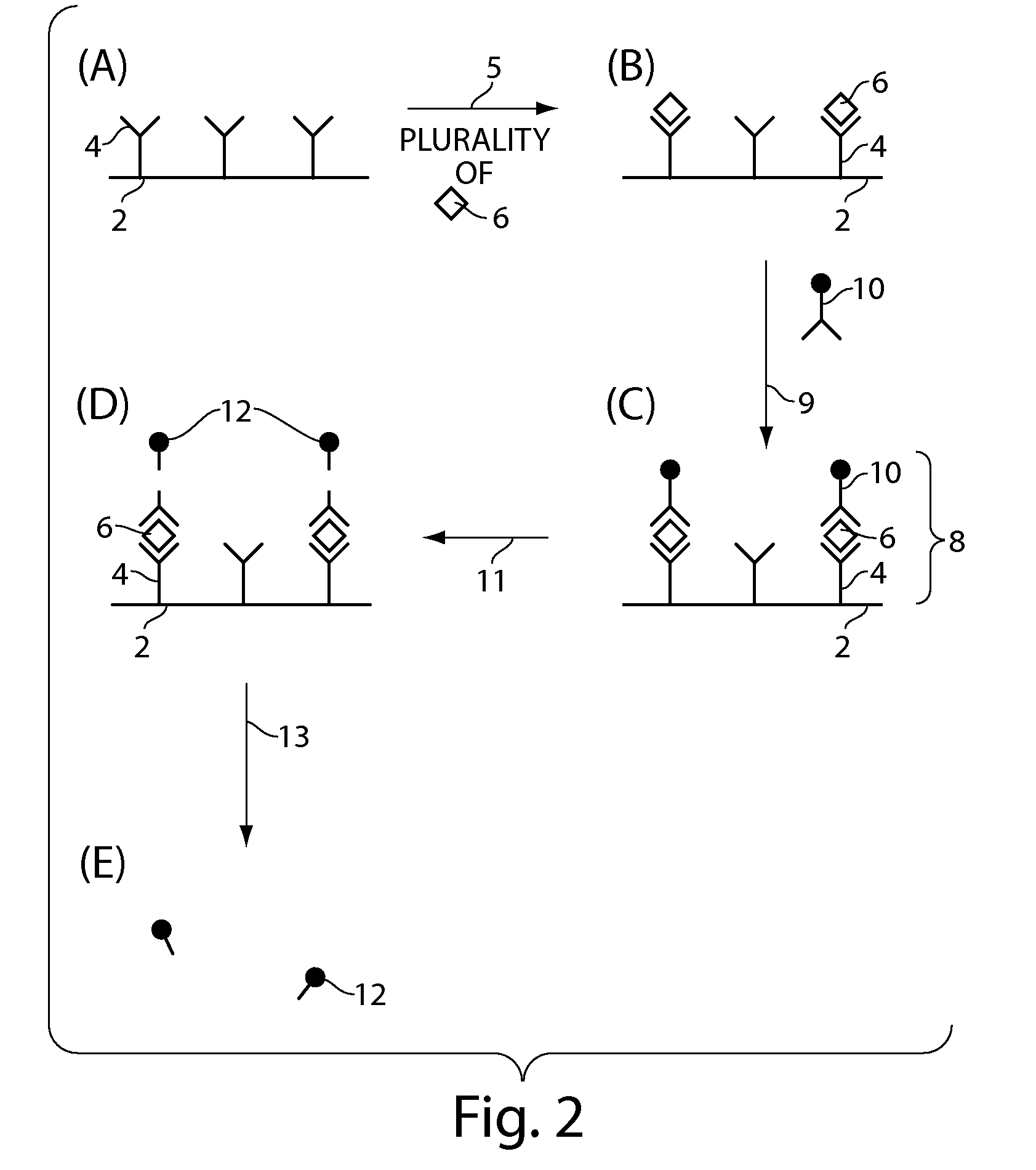Ultra-sensitive detection of molecules by capture-and-release using reducing agents followed by quantification
a technology of reducing agents and molecules, applied in the field of ultra-sensitive detection of molecules and particles, can solve the problems of limiting false positive signal generation, etc., and achieve the effect of the dynamic range, and reducing the sensitivity of most detection techniques
- Summary
- Abstract
- Description
- Claims
- Application Information
AI Technical Summary
Benefits of technology
Problems solved by technology
Method used
Image
Examples
example 1
[0222]This example outlines the materials used in the following examples. Optical fiber bundles were purchased from Schott North America, Inc (Southbridge, Mass.). In this example, the core glass comprised barium, lanthanum, boron, silica, and aluminum. The refractive index of the core was 1.694, and the density was 4.23 g / cc. The cladding glass comprised silica, lead, potassium, sodium, and aluminum. The refractive index of the clading was 1.559, and the density was 3.04 g / cc. The fiber array was a bundle of 50,000 individual fibers, each with a core diameter of 4.5 μm and the center-to-center spacing of the cores was 8 μm.
[0223]Non-reinforced gloss silicone sheeting was obtained from Specialty Manufacturing Inc. (Saginaw, Mich.). Hydrochloric acid, 3-aminopropyl trimethoxysilane, anhydrous ethanol, molecular biology grade Tween®20, and N,N-Dimethyl formamide were all obtained from Sigma-Aldrich (Saint Louis, Mo.). Phosphate buffered saline, Blocker™ BSA (10%), Zeba Desalt spin col...
example 2
[0224]The example outlines the preparation of 1 um magnetic bead functionalized with TNF-alpha capture antibody. 20 uL of amine-reactive bead stock was washed three times in 0.1 M sodium borate coating buffer at pH 9.5 using a microtube magnetic separation device (BioMag® Tube Separator; Polysciences Inc., Warrington, Pa.). 500 ug TNF-alpha capture antibody was dissolved in 183.5 uL of sodium borate coating buffer. 104 uL of 3M ammonium sulfate was added to the antibody solution. 135 uL of the resulting antibody solution was added to the cleaned 20 uL bead aliquot and mixed at 37° C. for 24 hours. After incubation, the supernatant was removed using the magnetic separator, and 200 uL of PBS buffer containing 0.5% BSA and 0.05% Tween®20 was added to the beads. The beads were blocked overnight (˜8 hours) at 37° C. The functionalized and blocked beads were washed 3 times with 1 mL PBS buffer containing 0.1% BSA and 0.05% Tween®20. The beads were diluted to 1.5 mL in PBS containing 0.1% ...
example 3
[0225]The following is an example of the preparation of TNF-alpha detection antibody (binding ligand) comprising a disulfide cleavable biotin linkage. 100 ug of TNF-alpha detection antibody (R&D Systems, AF-210-NA) was dissolved in 100 uL PBS pH 7.4 buffer. 164 uL of PBS pH 7.4 buffer was added to a tared vial containing 1 mg sulfo-NHS-ss-biotin, yielding a 10 mM stock solution. 1.34 uL of the 10 mM stock solution was added to the 100 uL antibody solution, equating to a 20-fold molar excess of the biotin label. The antibody / NHS-ss-biotin solution was mixed for 1 hr at room temperature. The antibody-ss-biotin conjugate was purified using a Zeba Desalt Spin Column. The purification was performed according to the Pierce protocol for product #89882. The purified conjugate was diluted up to 2 mL, making a 50 ug / mL stock solution. 50 uL aliquots of this 50 ug / mL solution were stored at −20° C. for later use.
PUM
| Property | Measurement | Unit |
|---|---|---|
| volume | aaaaa | aaaaa |
| volume | aaaaa | aaaaa |
| volume | aaaaa | aaaaa |
Abstract
Description
Claims
Application Information
 Login to View More
Login to View More - R&D
- Intellectual Property
- Life Sciences
- Materials
- Tech Scout
- Unparalleled Data Quality
- Higher Quality Content
- 60% Fewer Hallucinations
Browse by: Latest US Patents, China's latest patents, Technical Efficacy Thesaurus, Application Domain, Technology Topic, Popular Technical Reports.
© 2025 PatSnap. All rights reserved.Legal|Privacy policy|Modern Slavery Act Transparency Statement|Sitemap|About US| Contact US: help@patsnap.com



